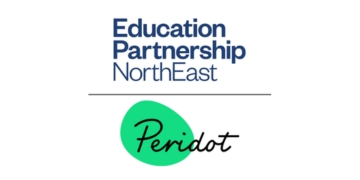Access certainly does transform lives; it did mine and I have seen it with countless other students during the course of my career.
I have been involved with Access to HE for well over 30 years, first as a student and then as a tutor, co-ordinator, quality assurer and finally quality manager for Laser Learning Awards.
We are one of the nine Access validating agencies licensed by the QAA to approve centres to deliver Access to HE qualifications.
In Fabienne Bailey’s recent article for FE Week, she advocates for a blended approach as it allows for the benefits of flexible delivery, which sits well with students’ often busy lives, and allows them to gain the real benefits of working within a community of learners and supporting one another.
I could not agree more, as the challenges Access students face are significant and multifaceted.
As an exercise to understand the impact of demographic factors upon achievement and grading, I have been analysing data for the last nine years.
The impact of factors such as postcode deciles and ethnicity on graded achievement has been a constant during this time.
Less affluent students in the worst case are 15 per cent less likely to achieve an all-distinction profile (the highest attainment), and this intersects with other factors such as ethnicity and gender to condition the chances of success for students.
Black students have a higher probability of achievement but significantly lower chances of gaining all-distinction profiles.
I wanted to understand why and how these factors impacted through students’ own perceptions. So we undertook a survey to which around 10 per cent of the students in our centres responded.
These responses contained very stark messages for those of us involved in the delivery of Access to learn from. And the uniformity of responses was striking.
Two thirds of students perceived their main barriers as falling entirely outside of the classroom. The main and most frequent barriers to engaging with their programmes, experienced by well over 40 per cent of respondents, related to economics. This was a constant across all demographics.
Black students were slightly more likely to note ‘scheduling work’ as the most frequent concern, as opposed to financial issues (such as paying bills) for white British students.
But the overarching message across all groups, regardless of social class, gender and ethnicity, was that economic factors formed the most frequent perceived barrier to progression.
The percentage of more affluent students noting the perception of these concerns as ‘frequent’ fell in comparison with less affluent student perceptions, suggesting the challenges were experienced differently. Importantly though, the perceptions of barriers remained alarmingly constant for all groups.
In the new reality of flexible working, it is difficult for students to fit the pressing requirements of their employers to work when they need them (shout out to the impact of zero-hours contracts here), with fixed programmes of study.
Conventional programmes of study don’t fit around realities more aligned to Heraclitus’ notion that ‘All is flux’. You might be free on a Tuesday afternoon when you start your course, but this may not be the case for its duration.
Engaging with a blended model to help the student fit the course around their lives is key. Supporting them via flexible models of delivery and scaffolding when students cannot engage is not ‘good practice’; it is the new ‘necessary’.
The Covid era has given us a rare moment to engage with new tools to support and scaffold learners. In my view, we must embrace these tools to full effect whilst also retaining the esprit de corps which makes Access the jewel in the FE crown.
The driving force must be to balance flexible delivery with face-to-face support. It will not be easy, but to ignore students’ lived experiences inevitably will lead to decline.
Students told us that they remain confident they will succeed thanks to their tutors’ support. In my view we need to listen to them to reshape Access for a new era.
















Your thoughts